Mulesoft MuleSoft Certified Developer-Level 1 MuleSoft Certified Developer-Level 1 (Mule 4) Online Training
Mulesoft MuleSoft Certified Developer-Level 1 Online Training
The questions for MuleSoft Certified Developer-Level 1 were last updated at Feb 15,2025.
- Exam Code: MuleSoft Certified Developer-Level 1
- Exam Name: MuleSoft Certified Developer-Level 1 (Mule 4)
- Certification Provider: Mulesoft
- Latest update: Feb 15,2025
Refer to the exhibits.
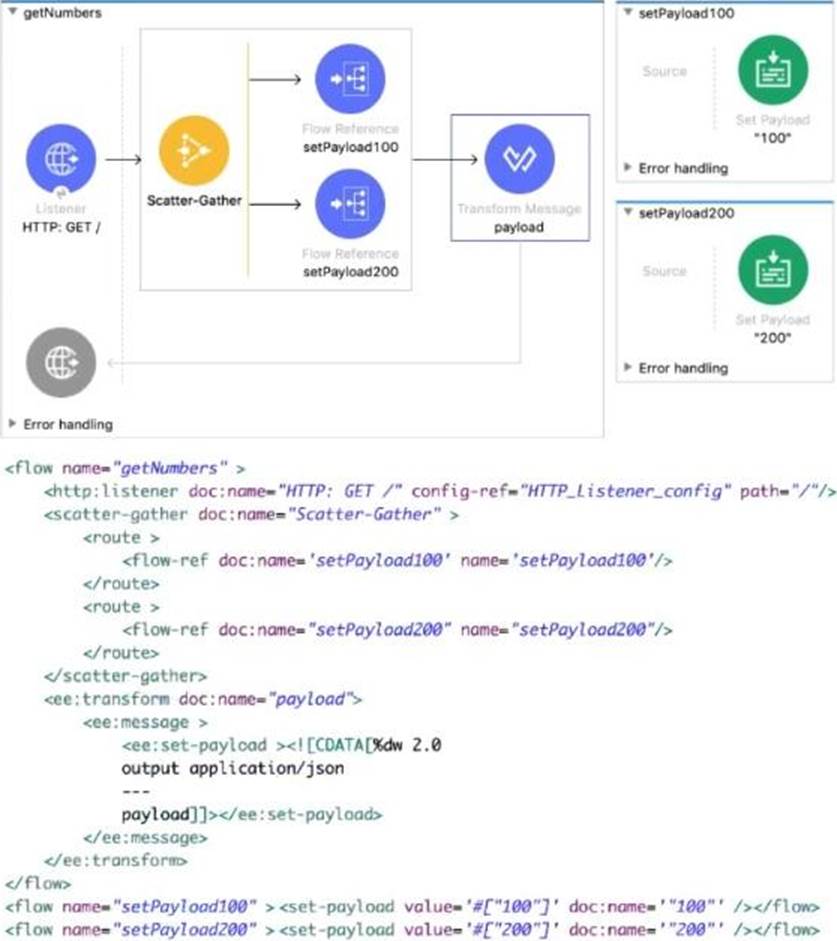
The input array of strings is processed by the batch job that processes, fitters, and aggregates the values.
What is the last message logged by the Logger component after the batch job completes processing?
A)
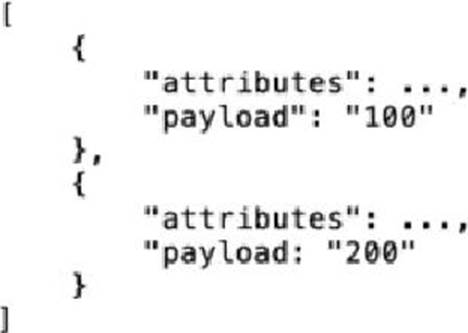
B)
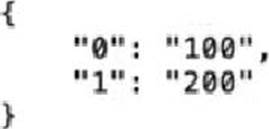
C)
![]()
D)
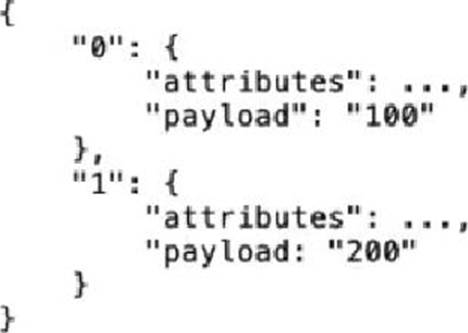
- A . Option A
- B . Option B
- C . Option C
- D . Option D
A mule project contains MySQL database dependency . The project is exported from Anypoint Studio so that it can be deployed to Cloudhub.
What export options needs to be selected to create the smallest deployable archive that will successfully deploy to Cloudhub?
- A . Select both the options 1) Attach project sources 2) Include project module and dependencies
- B . No need to select any of the below options 1) Attach project sources 2) Include project module and dependencies
- C . Select only below option 2) Include project module and dependencies
- D . Select only below option 1) Attach project sources
C
Explanation:
You can choose Attach Project Sources to include metadata that Studio requires to reimport the deployable file as an open Mule project into your workspace. You must keep the Attach Project Sources option selected to be able to import the packaged JAR file back into a Studio workspace. But requirement here is to create smallest deployable archive that will successfully deploy to Cloudhub. Hence we can ignore this option. We need to select Include project module and dependencies
As actual modules and external dependencies required to run the Mule application in a Mule runtime engine
Hence correct answer is Select only below option 2) Include project module and dependencies
MuleSoft Doc
Ref: https://docs.mulesoft.com/studio/7.5/import-export-packages#exporting-a-studio-project-to-a-deployable-mule-application
A web client sends a request to http;//localhost:8081?dept=sales.
What is the correct DataWeave expression to access the value of dept?
- A . attributes.queryParams.dept
- B . attributes.dept
- C . message.queryParams.dept
- D . vars.dept
A shopping API contains a method to look up store details by department
To get information for a particular store, web clients will submit requests with a query parameter named department and a URI parameter named storeld.
What is a valid RAML snippet that supports requests from web clients to get data for a specific storeld and department name?
A)
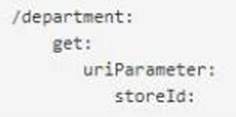
B)
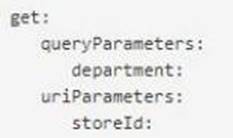
C)
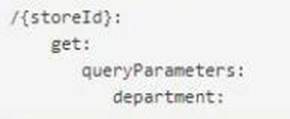
D)
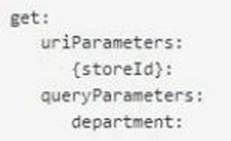
- A . Option A
- B . Option B
- C . Option C
- D . Option D
CORRECT TEXT
Refer to the exhibits.
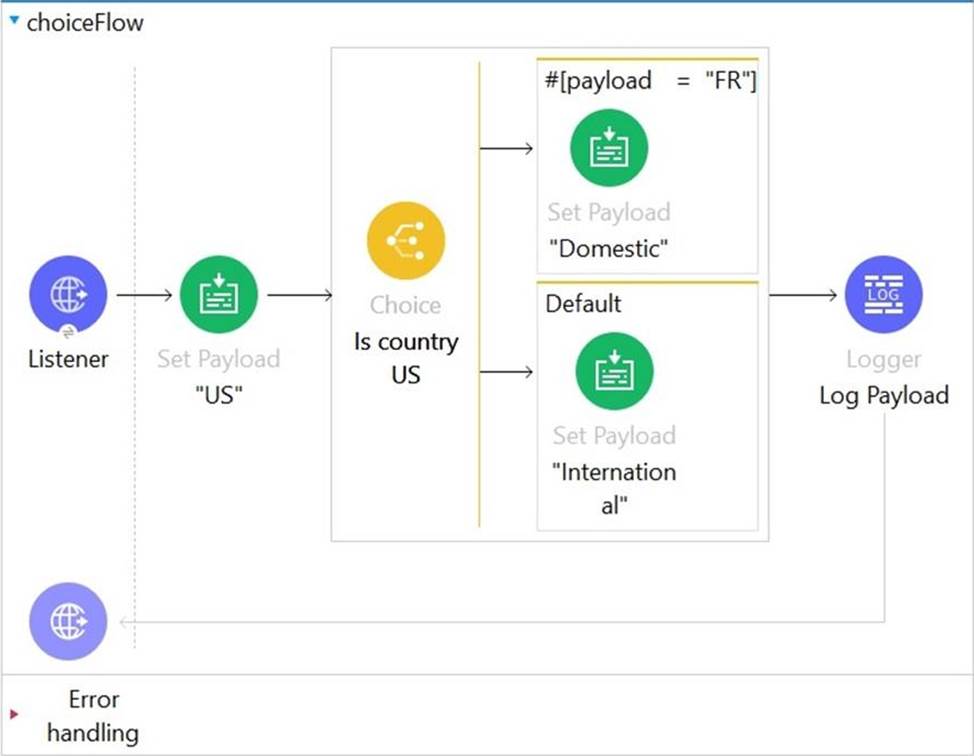
In the choice router, the When expression for the domestic shipping route is set to "#[payload= "FR"]".
What is the output of logger after the execution of choice router is completed?
- A . "Domestic"
- B . "International"
- C . "US"
- D . A dataweave syntax error (Correct)
D
Explanation:
To compare, DataWeave syntax is #[payload == "FR"]. In this case only one = is used so it will give syntax error.
Refer to the exhibits.
The mule application implements a REST API that accepts GET request from two URL’s which are as follows
1) http://acme.com/order/status
2) http://acme.com/customer/status
What path value should be set in HTTP listener configuration so that requests can be accepted for both these URL’s using a single HTTP listener event source?
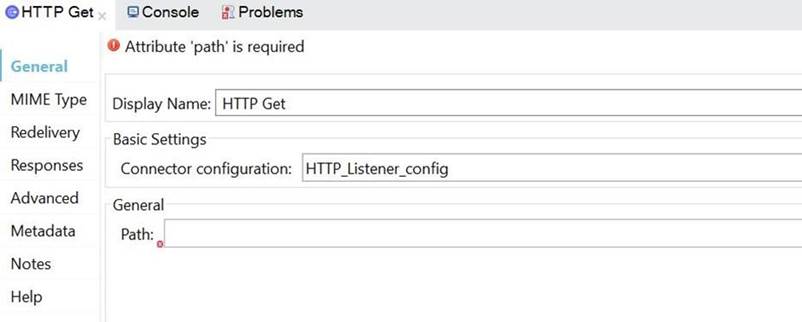
- A . *[order,customer]/status
- B . ?[order,customer]/status
- C . */status (Correct)
- D . *status
C
Explanation:
Correct answer is */status as it is the correct way to use wildcards while configuring path value in HTTP listener
Refer to the exhibit.
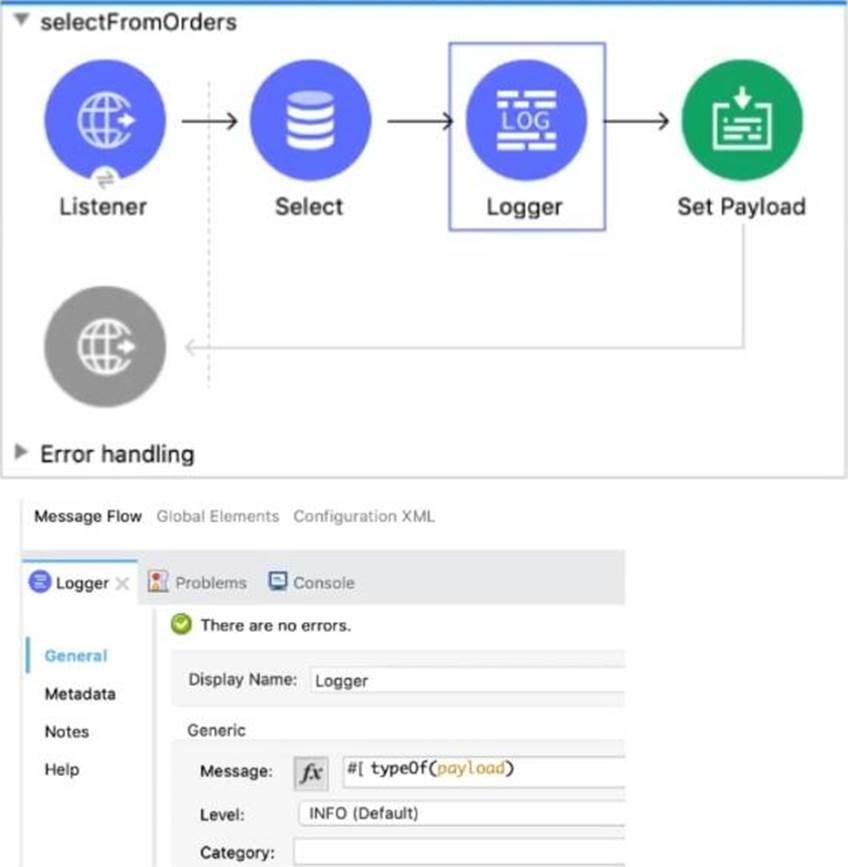
The Database Select operation returns five rows from a database.
What is logged by the Logger component?
- A . "Array"
- B . "Object"
- C . "LinkedHashMap"
- D . "CaselnsensitrveHashMap"
What does C4E stands for in MuleSoft recommended IT operating model?
- A . Centre for Empowerment
- B . Centre for Engagement
- C . Centre for Enablement
- D . Centre for Excellence
C
Explanation:
Centre for Enablement (C4E) is an IT operating model that enables an enterprise to build reusable assets, accumulate API’s, leverage best practices and knowledge to enable self service and efficient delivery in the organization and implement new solutions faster
To avoid hard-coding values, a flow uses some property placeholders and the corresponding values are stored in a configuration file.
Where does the configuration file’s location need to be specified in the Mule application?
- A . The pom.xml file
- B . A global element
- C . The mule-art if act .json file
- D . a flow attribute
B
Explanation:
Correct answer is A global element
When we create a configuration file, that file needs to added as Global Configuration file in Global element. A global element is a reusable object containing parameters that any number of elements in a flow can share. You reference a global element from Anypoint Connectors or components in your Mule application
Refer to the exhibits.
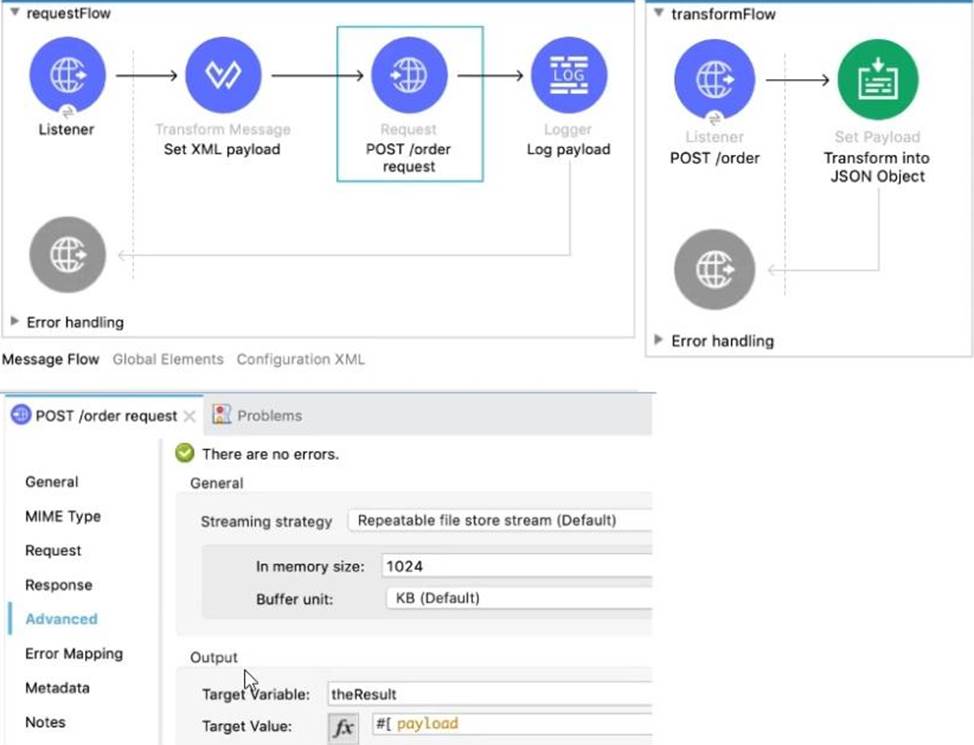
In the request Flow an HTTP Request operation is configured to send an HTTP request with an XML payload. The request is sent to the HTTP Listener in the transform Flow.
That flow transforms the incoming payload into JSON format and returns the response to the HTTP request. The response of the request is stored in a target variable named the Result.
What is the payload at the Logger component after the HTTP Request?
- A . A non-empty Java object
- B . The original XML payload
- C . null
- D . The returned JSON response
Latest MuleSoft Certified Developer-Level 1 Dumps Valid Version with 99 Q&As
Latest And Valid Q&A | Instant Download | Once Fail, Full Refund

